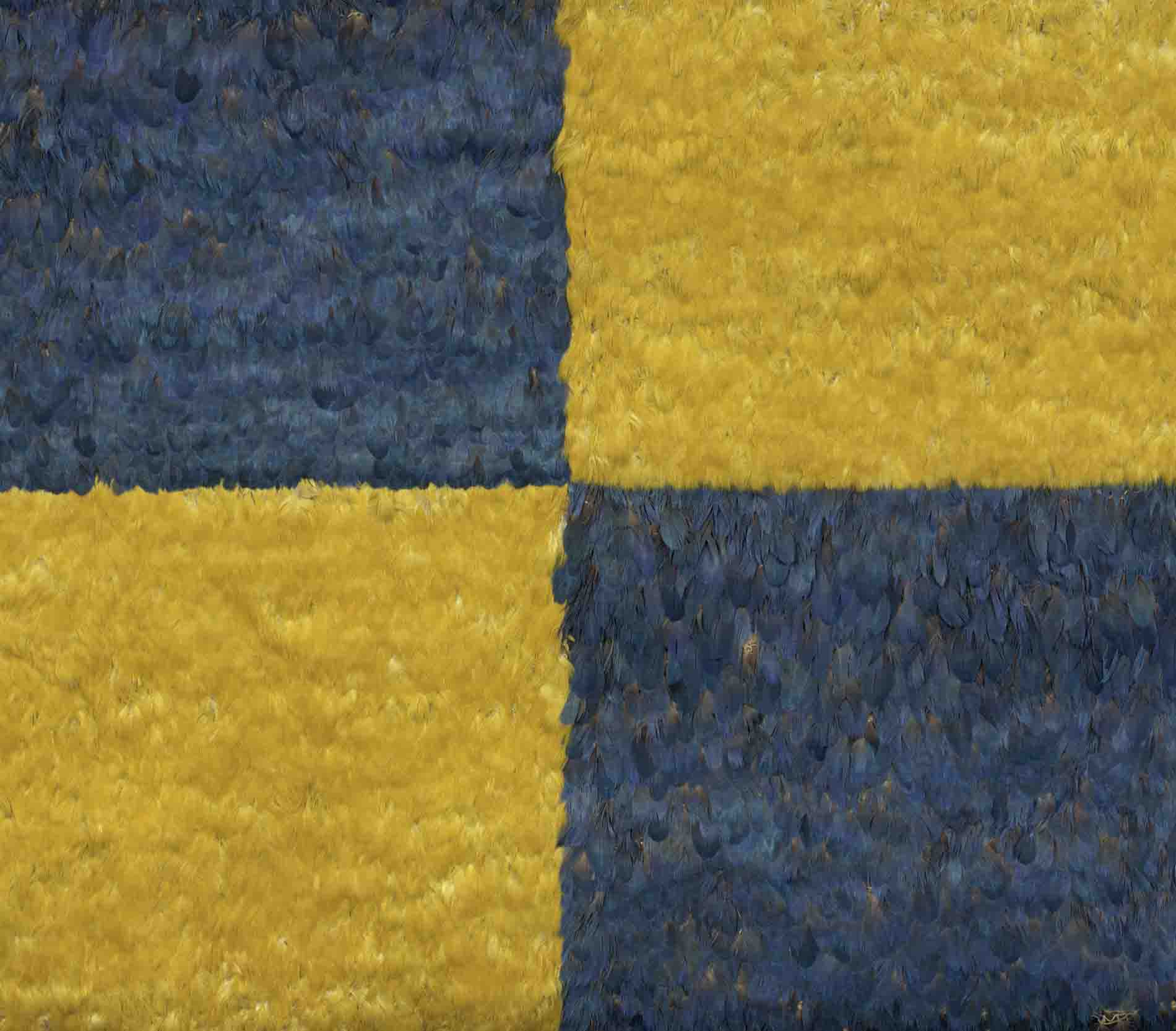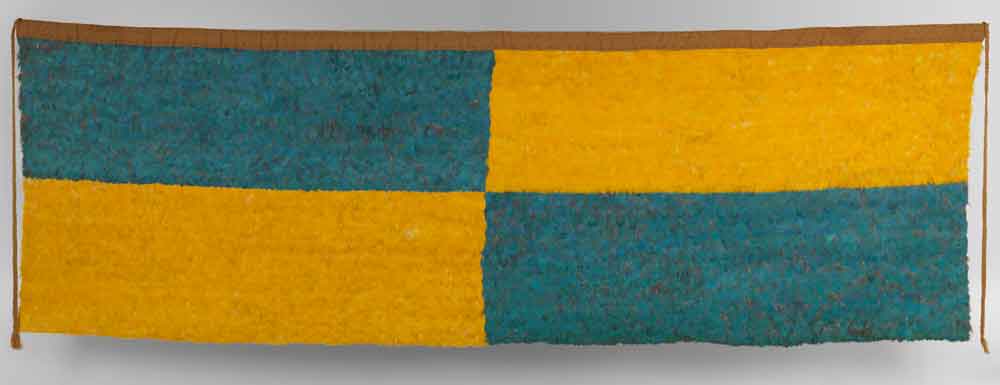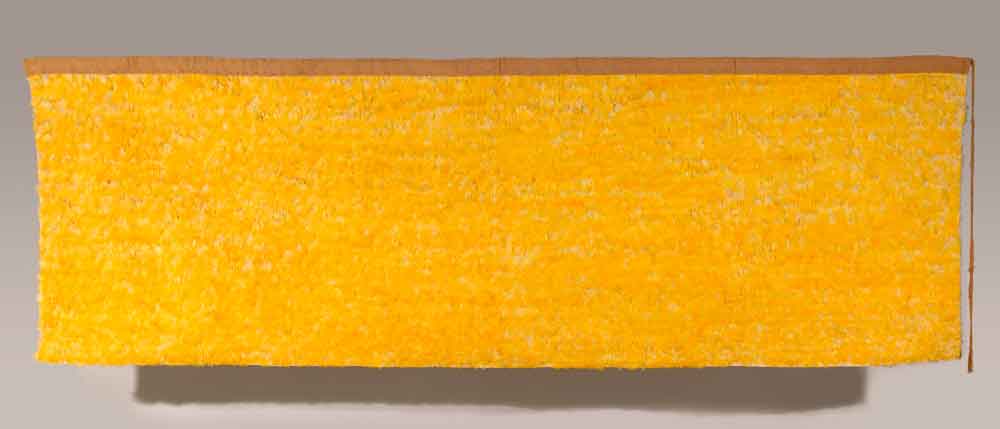Ancient Peruvian featherwork at the Metropolitan Museum, New York
Feathered Walls: Hangings from Ancient Peru, is an installation comprising twelve spectacular feather panels made by the Wari people of southern Peru, on view in the Department of the Arts of Africa, Oceania, and the Americas at the Metropolitan Museum of Art until 2 March 2014.
Many of the panels are carbon-14 dated between about 600 and 1000 AD. Made of finely woven cotton cloth and measuring approximately 2.1 x 0.6m (7′ x 2′) on average, the panels are completely covered with the small iridescent body feathers of the blue and yellow macaw in a bold design of large rectangles. They rank among the most luxurious and unusual works created by textile artists in Peru prior to the Spanish conquest in 1532.
The panels were reportedly part of a group of 96 excavated in 1943 by local people near the village of La Victoria in the Ocoña Valley, where it joins with the Churunga Valley on the far south coast of Peru. The find is considered the largest discovery of feather arts in ancient Peru. Said to have been found rolled up in large ceramic jars decorated with mythological imagery, many of the panels are very well preserved. Ten of them were acquired by Nelson A. Rockefeller in the 1950s and bequeathed to the Met in 1979.


Wari feathered Panel, Peru; reportedly from Corral Redondo, Churunga Valley, 7th-10th century, Feathers on cotton, camelid fibre; 0.74 x 2.12m (2’5″ x 6’11”)
The Metropolitan Museum of Art, The Michael C. Rockefeller Memorial Collection, Bequest of Nelson A. Rockefeller, 1979

Detail of panel

Wari feathered panel, Peru; reportedly from Corral Redondo, Churunga Valley, 7th-10th century, Feathers on cotton, camelid fiber; 0.73 x 2.12m (2’4″ x 6’11”)
The Metropolitan Museum of Art, The Michael C. Rockefeller Memorial Collection, Bequest of Nelson A. Rockefeller, 1979

Wari feathered panel, Peru; reportedly from Corral Redondo, Churunga Valley, Carbon-14 date 660-870, AD. Feathers on cotton, camelid fibre; 0.69 x 2.13m (2’3″ x 6’11”)
The Metropolitan Museum of Art, The Michael C. Rockefeller Memorial Collection, Bequest of Nelson A. Rockefeller, 1979



























Comments [0] Sign in to comment